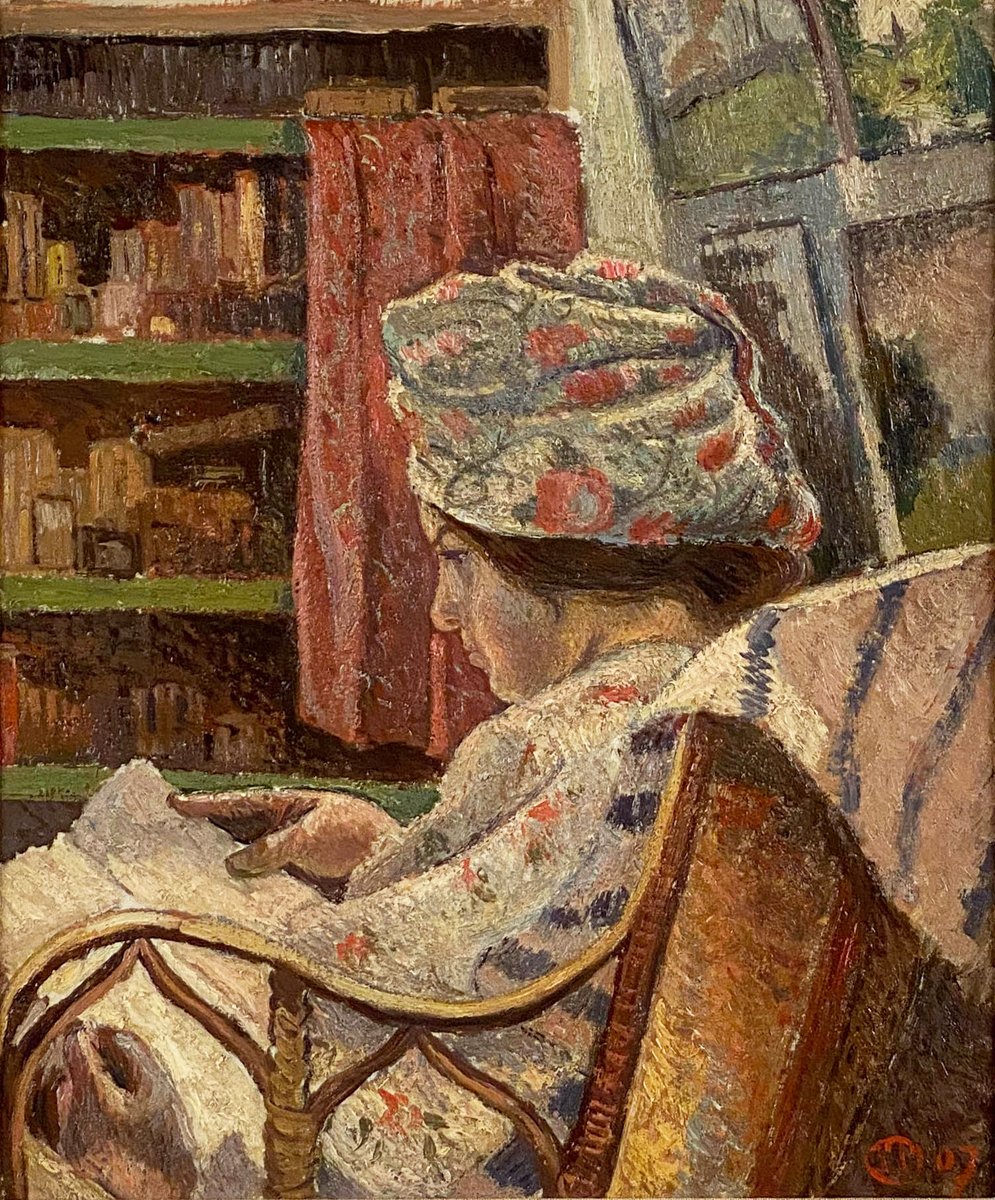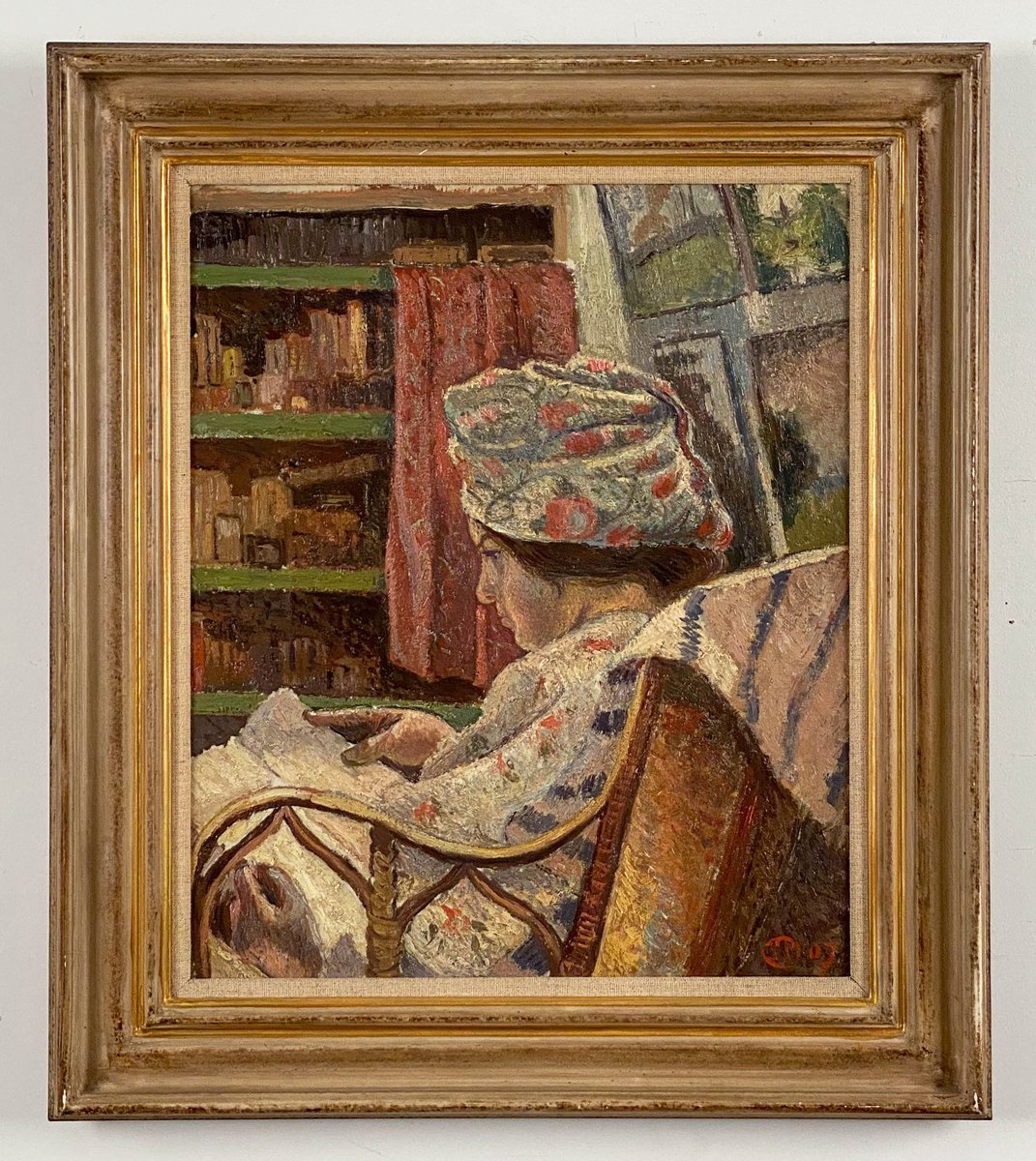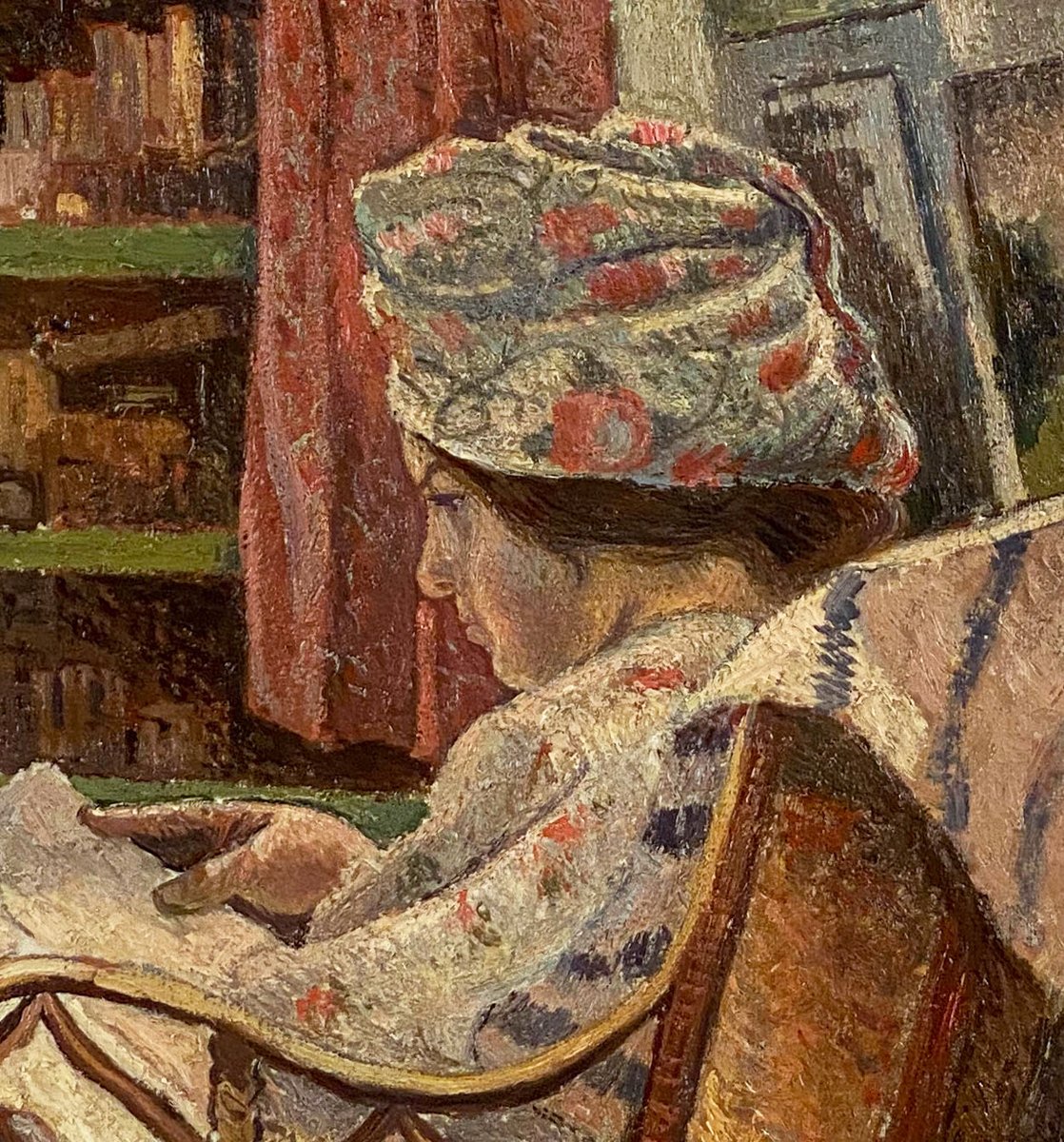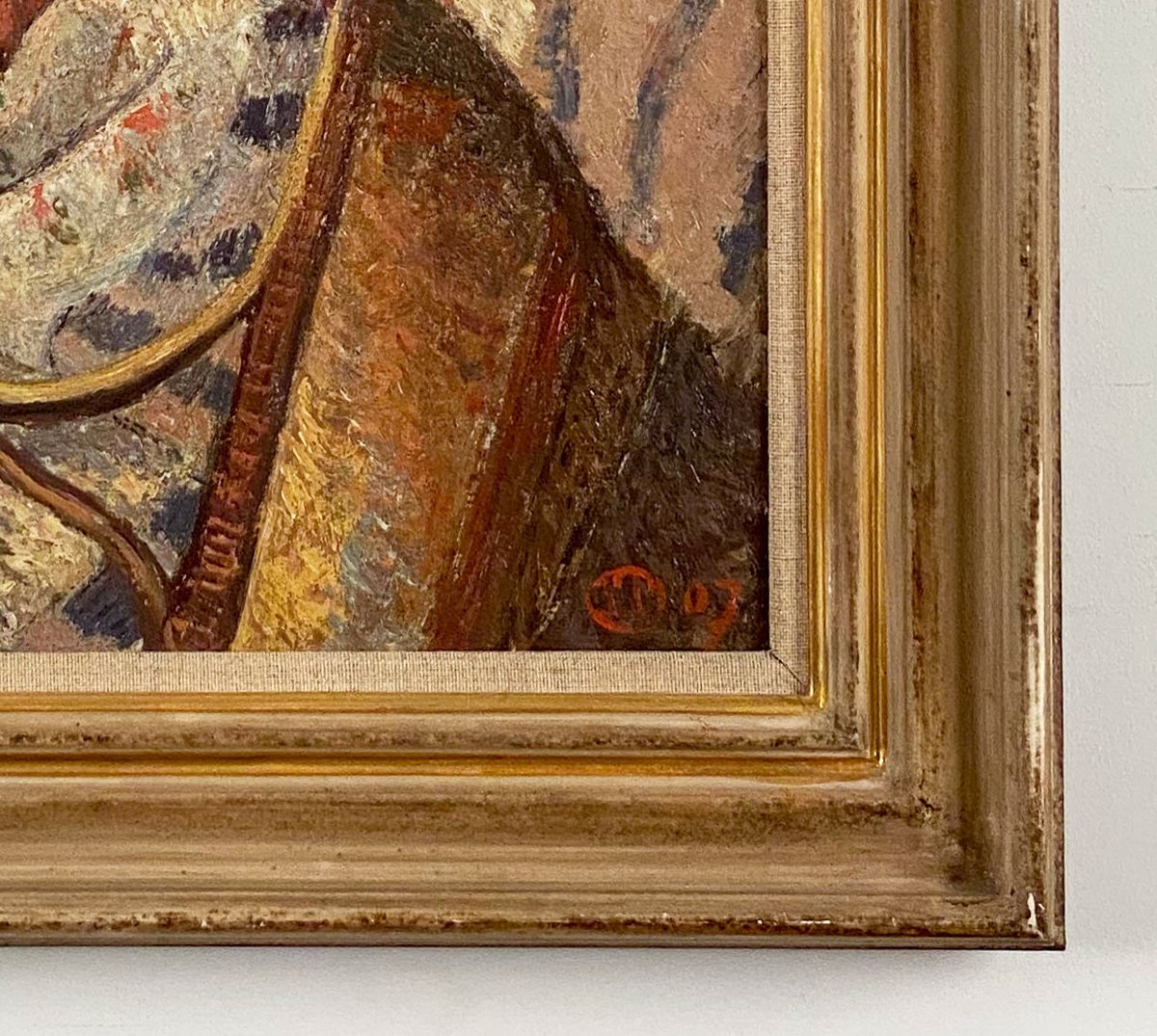Paintings
Lucien Pissarro
French, 1863-1944Girl Reading a Book
Oil on canvas18 ¼ by 15 in. W/frame 24 ¼ by 21 in.
Signed lower right and dated 1907
Provenance:
Private Collection, England
Trinity House Paintings, London
Private Collection England
Le Trianon Fine Art & Antiques, Sheffield Ma.
See Artist Bio below.
Lucien Pissarro
French, 1863-1944Born in Paris in 1863, he was the eldest son of Camille Pissarro and Julie Vellay.
A painter in oils and watercolor, wood engraver and lithographer, he began to draw and paint at a very young age. In 1870, during the Franco-Prussian war, the family fled to London, England but returned to Louveciennes, France, in June 1871 and shortly after moving to Pontoise. Through the encouragement, advice and instruction of his father and the presence of his father’s friends, Cézanne, Manet and Monet in particular, he began his development as an artist. In 1885, Camille and Lucien became friends with Paul Signac and Georges Seurat whose influence was apparent in the works they exhibited at the eighth Impressionist exhibition of 1886.
Lucien visited England in 1883 and upon his return in 1884, he became interested in the making of children’s books, studying the technique of wood engraving and learning the process of printing color blocks. He moved to England permanently in 1890, married Esther Bensusan in 1892 and in 1894 founded the Eragny Press in Hammersmith, which published limited editions of beautifully illustrated books. Several titles were published between 1894 and 1914, the first being Queen of the Fishes.
He became a naturalized British subject in 1916, visiting the South of France many times between 1922 and 1937. He also painted in Derbyshire, South Wales and Essex, landscapes being his favorite subject to the end. He rarely produced still-lives, and the handful of portraits that he painted were all of his family.
Lucien played a vital role in securing the acceptance of Impressionism in England. He was a founder member of the Camden Town Group, but when that was absorbed into the London Group he withdrew.
Lucien stayed close to his father Camille, and after Lucien’s first visit to England, Camille initiated a long and almost daily correspondence with his son, and those letters constitute an important document in the history of Impressionism.





